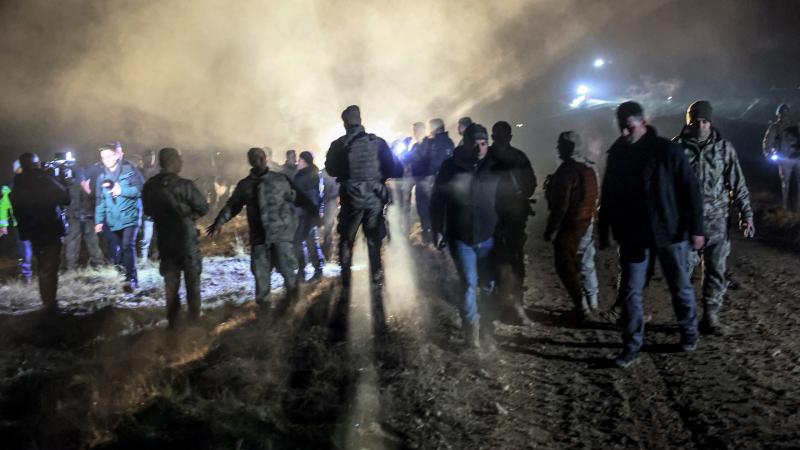The tunnels of Gaza: How an old Bedouin smuggling route became an underground lair for Hamas
During recent hostilities, Israel says it destroyed more than 60 miles of the terrorist group's subterranean passageways.
In the days leading up to the newly arranged truce with Hamas, Israel destroyed more than 60 miles of the terrorist group's subterranean "Metro" tunnel system, Israeli military officials said.
"In just five days, we neutralized it," the Israel Defense Forces said in a statement that was issued hours before the warring groups on Thursday announced a ceasefire. "Dubbed 'Metro,' this network of tunnels and bunkers runs underneath residential areas in Gaza. Hamas terrorists use the 'Metro' for storing weapons, shielding themselves, and executing attacks."
According to a map compiled by the IDF, the tunnels are complex, with many adjacent to and in some cases entering Israel. Others abut the Meditteranean Sea, from where supplies can be delivered.
Hamas has touted the vast underground network as a solution to a challenging problem.
"In light of the balance of power, which is shifted toward Israel, we had to be creative in finding innovative ways," Hamas official Khalid Mishal in 2014 told Vanity Fair magazine. "The tunnels were one of our innovations."
The underground passageways were first dug in the early 1980s by Bedouins who smuggled goods between Gaza and Egypt, according to one author.
"To avoid detection, Gazans dug their tunnels from the basements of their houses to a depth of about fifteen meters, headed south for a few dozen meters, and then resurfaced on the Egyptian side of the border, often in a relative's house, grove, or chicken coop," wrote Nicolas Pelham in an essay for the Journal of Palestine Studies. The tunnel networks became an important commercial underground highway, and were so pervasive that authorities in Gaza regulated how they were built and used, Pelham wrote.
Over the years, the tunnels were increasingly adapted to military purposes. Palestinian extremists smuggled weapons from Egypt into Gaza, according to the IDF. In one infamous incident, militants in 2006 dragged wounded Israeli soldier Gilad Shalit into a tunnel, and held him in Gaza for five years before releasing him as part of a prisoner exchange.
In the past decade, Hamas has "spent millions of dollars on digging an underground tunnel network underneath civilian homes in Gaza," the IDF said in a May 19 video.
"The tunnels were originally used by Hamas operatives to hide after firing rockets at Israel," the IDF said, noting that the group connected its smaller chambers "until they became a complex underground system allowing terrorists to hide, train, and transport weapons."
Finding and destroying the tunnels has been the work of the Yahalom, an elite unit within the Combat Engineering Corps. The group most recently worked with other units in order to collapse the underground structures.
"Throughout Operation Guardian of the Walls, our fighter jets, tanks, artillery and infantry units along the border have been working together to strike hundreds of terror targets and neutralize the tunnels," the IDF said.
A spokesperson for Hamas did not immediately return messages from Just the News.
Israel and Hamas on Thursday agreed to a cease fire that will commence at 2 a.m. local time on Friday, imposing a truce in some of the worst regional fighting in years.















